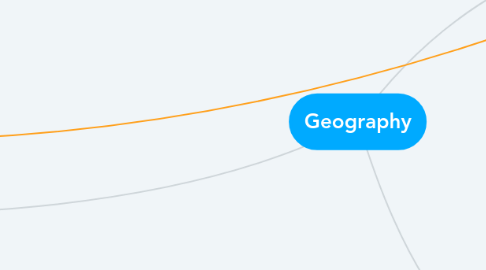
1. Human Environment Geography
1.1. Politics of Nature
1.1.1. Human Conceptions
1.1.1.1. Ecocentric
1.1.1.2. Constructivist
1.1.2. Past Approaches
1.1.2.1. Urbanization
1.1.2.2. Exploitation of Raw Materials
1.1.2.2.1. ecotourists
1.1.3. Modern Approach/Focus
1.1.3.1. Brown Issues
1.1.3.2. Downsides of Economic Growth
1.1.3.3. Sustainable Development
1.2. Biophysical Environment
1.2.1. Study of the Earth
1.2.1.1. Biophysical Phenomenon
1.2.2. Biomes
1.2.2.1. Tropical Rainforest
1.2.2.2. Savannah/Tropical Dry Forest
1.2.2.3. Desert/Semi-desert
1.2.2.4. Mediteranean
1.2.2.5. Temperate Grasslands
1.2.2.6. Temperate and Deciduous Forest
1.2.2.7. Boreal Forest
1.2.2.8. Tundra
1.2.3. Species Interrelation
1.3. Environmental History
1.3.1. Early Theories
1.3.1.1. Environmental Determinism
1.3.1.1.1. Environment determines behavior/ capacity
1.3.2. Question of Power
1.3.2.1. Who is being left out
1.3.2.2. Who is writing the narative
1.4. Cultural Ecology
1.4.1. Theories
1.4.1.1. Modernization Theory
1.4.1.1.1. European economic model trumps all
1.4.1.2. Dependency Theory
1.4.1.2.1. Tropical Economic are underdeveloped
1.4.1.3. Dualism
1.4.1.3.1. Development of one area for the benefit of another
1.4.2. Thoughts
1.4.2.1. Scale
1.4.2.1.1. Large Scale: zoomed in, more detail
1.4.2.1.2. Small Scale: zoomed out, less detail
1.4.2.2. Marginality
1.4.2.2.1. ex. European Settlers implementing farming practices that are wrong for the local lands
1.5. Political Ecology
1.5.1. Understanding of contributors to marginality
1.5.2. Attention to discourse- anything that creates an outside framework in our minds influencing our thoughts and decisions
1.6. Hazards Geography and Human Vulnerability
1.6.1. Gilbert White
1.6.1.1. first advocate for flexibility/ accommodation
1.6.2. Political economy argument
1.6.2.1. "choice" is influenced by place in society
1.6.2.2. technological justice
1.6.3. Risk and perception
1.6.3.1. unequal distribution of risk
1.6.3.2. many factors change our perception of risk
1.6.4. adaptation and coping- responding to external shock
1.6.4.1. adaptation
1.6.4.1.1. long term
1.6.4.1.2. response to extremes
1.6.4.2. coping strategies
1.6.4.2.1. short term
1.6.4.2.2. goal to survive and return to "normal"
1.6.5. Role of global economy
1.6.5.1. colonization
1.6.5.1.1. disrupts the already adapted systems
1.7. Environmental Justice
1.7.1. Fair treatment and meaningful involvement of all people
1.7.2. Perspective
1.7.2.1. unequal exposure to hazards
1.7.2.2. activism used to mitigate of eliminate hazard
1.7.3. equity
1.7.3.1. geographic
1.7.3.1.1. location and proximity
1.7.3.2. social
1.7.3.2.1. socio-economic factors influencing decisions
1.7.3.3. procedural
1.7.3.3.1. fairness of rules, regulation, power
1.7.3.4. generational
1.7.3.4.1. justice for future generations
1.7.4. Environmental racism
1.7.4.1. correcting past
1.7.4.2. blames global Environmental Movement for past neglections
1.7.5. Theories of EJ
1.7.5.1. economic
1.7.5.2. sociopolitical
1.7.5.3. race
1.7.5.4. institutional
1.7.5.5. race
1.7.5.6. institutional and systemic issues
1.8. Climate, Atmosphere, Energy
1.8.1. acid rain
1.8.1.1. nitric acid and sulfuric acid
1.8.1.2. fossil fuels
1.8.2. stratosphere ozone depletion
1.8.2.1. CFCs- refrigeration
1.8.2.2. Cancer risk
1.8.2.3. Plant/animal harm
1.8.3. Climate and Global warming
1.8.3.1. Vilification of developing countries
1.8.3.2. REDD- reducing emissions from deforestation and forest degradation
1.8.3.2.1. market incentives
1.8.4. Big concerns
1.8.4.1. sea level rise
1.8.4.2. droughts and shifts in agg. areas
1.8.4.3. human impact- spread of disease
1.8.5. Policies
1.8.5.1. Earth Summit 1992
1.8.5.2. Kyoto protocol
1.8.5.3. Copenhagen Accord 2009
1.8.5.4. Paris Climate talks 2015
1.9. Population, Consumption, Technology
1.9.1. Structuralist
1.9.1.1. individuals benefit through labor --> Employers pay lower wages from the labor surplus --> poverty is induced
1.9.1.2. Neo-structuralist
1.9.1.2.1. scarcities result from resource hoarding
1.9.1.3. Esther Boerup
1.9.1.3.1. population and food productivity increase together
1.9.1.4. David Harvey
1.9.1.4.1. Policies are fixated on fertility
1.9.1.4.2. we ignore consumption
1.9.2. Cornucopian or technocratic
1.9.2.1. technology will overcome any resource constraints
1.9.2.1.1. Julian Simon
1.9.2.1.2. Bjorn Lomborg
1.9.3. IPAT (Impact= population x consumption x impact per consumption
1.9.3.1. But.....
1.9.3.1.1. doubled populations do not equate to double impacts
1.9.3.1.2. political dimensions are ignored
1.9.4. Population 7 Billion
1.9.5. Fertility and Birth
1.9.5.1. changes with education, traditions, religions, and birth control use.
1.9.5.2. Controlled by population policy and programs
1.9.5.3. Natism
1.9.5.3.1. Birth and fertility oriented political beliefs
1.10. Food and Agriculture Systems
1.10.1. Systems
1.10.1.1. Extensive
1.10.1.1.1. limited by labor or energy
1.10.1.2. Intensive
1.10.1.2.1. increasing production with more inputs
1.10.1.3. Traditional
1.10.1.3.1. polycultural/ agroforestry
1.10.1.3.2. shifting/ slash and burn
1.10.1.3.3. subsistence
1.10.1.4. Industrial
1.10.1.4.1. commercial
1.10.1.4.2. monocultural
1.10.1.4.3. heavily uses: fossil fuels, GMOs, water, chemicals
1.10.1.4.4. Concentrated animal feeding operations
1.10.1.5. Agrosystems
1.10.1.5.1. interactions between pests and plants
1.10.2. Famine and Hunger
1.10.2.1. Food access is key
1.10.2.1.1. solution to hunger is not to grow more food
1.10.2.1.2. food security
1.11. Biodiversity, Conversation, and Protected Areas
1.11.1. Biodiversity Concerns
1.11.1.1. Decline in Biodiversity
1.11.1.1.1. Extinctions and Mass Extinctions
1.11.1.1.2. Genetic Bottlenecks
1.11.1.2. Keystone Species
1.11.1.2.1. these play an important role in the survival of the whole ecosystem
1.11.1.3. Endemic Species
1.11.1.3.1. those only found in a specific area
1.11.1.4. Invasive Species
1.11.1.4.1. reproduce quickly and aggressively, making it hard for native species to survive
1.11.2. Environmental Governance
1.11.3. Protected Habitats
1.11.3.1. Elephant Habitats
1.11.3.1.1. Conservation Areas
1.11.3.2. Most Biodiversity Hotspots are not protected
1.11.3.3. Carbon Sinks and Sequestration
1.11.3.3.1. Help take Carbon Dioxide out of the atmshpere
1.11.4. Ecotourism
1.11.4.1. tourism based on natural environments
1.11.5. Endangered Species Act (ESA, 1973)
1.11.5.1. "ground-breaking" legislation for the protecting of species going extinct
1.11.6. Key Qustions
1.11.6.1. Who decides what is conserved and what the outcomes are
1.11.6.2. Who manages protected areas
1.11.6.3. How do we preserve and protect without affecting locals
1.12. Water resources and fishing livelihoods
1.12.1. Hydrological Cycle
1.12.1.1. How things end up in the water
1.12.1.1.1. Pharmaceutical Products
1.12.2. Ancient Water Controls
1.12.2.1. water routing for farming
1.12.2.1.1. aquaducts
1.12.2.1.2. canals/ ditches
1.12.3. Water scarcity
1.12.3.1. privatization of the resource management
1.12.3.2. water wars
1.12.3.3. global water justice
1.12.3.4. water rights
1.12.3.4.1. first in time, first in rights
1.12.4. marine dead zones
1.12.4.1. overfishing
1.12.5. Common property resources
1.12.5.1. tradgety of the commons
1.12.5.1.1. the selfishness/greed of the few destroy the resource for all
2. Physical Geography
2.1. Atmosphere
2.2. Lithosphere
2.3. Hydrosphere
2.4. Biosphere
3. Human Geography
3.1. Development
3.1.1. Urbanization
3.1.2. Industrialization
3.1.3. Economic Growth
